Glossary
The entries selection comes from the book “Dictionary of Judaica” (2005), which was written by a group of authors led by Eva Kosáková . Entries were further processed by Jaroslav Kuntoš, Dana Veselská, Olga Sixtová, Michaela Scheibová and Lenka Uličná. The book can be purchased at our e-shop.
Hanukkah candelabrum (Heb. hanukkiyah)
A candelabrum used during the holiday of Hanukkah, which commemorates the rededication of the Temple of Jerusalem and whose main ceremony is the kindling of lights for a period of eight days. By its shape, the Hanukkah candelabra can be divided into two major groups. The bench type consists of a low row of oil burners or candles with a back plate. The menorah* type consists of eight arched branches which are decorated with stylized floral motifs and reach upward from a central stem. Most candelabra have a ninth light, the “servant” (Yid. shammes), which is usually placed on its own outside the row. Some bench candelabra contain two servant lights which can also be used as Shabbat candelabra*. As the ornamentation of Hanukkah candelabra is not strictly prescribed, it has been left to the creative invention of craftspeople and to their clients’ requirements. They are usually made of metal, the use of other materials being very rare. Candelabra for private use have traditionally been silver, although some are made of brass; candelabra for use in the synagogue are cast in brass or bronze, less frequently made of iron. Hanukkah candelabra can vary considerably in size; those used in the home are usually between 15 and 40 centimetres in height, while synagogue candelabra can be as large as almost two metres.
Back to list


![[subpage-banner/2_pamatkyaexpozice_1.png]](https://c.jewishmuseum.cz/images/subpage-banner/2_pamatkyaexpozice_1.png)
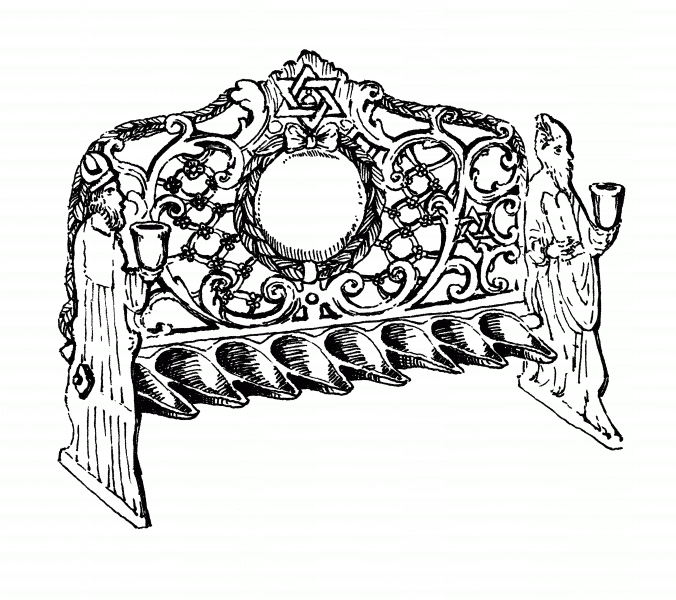
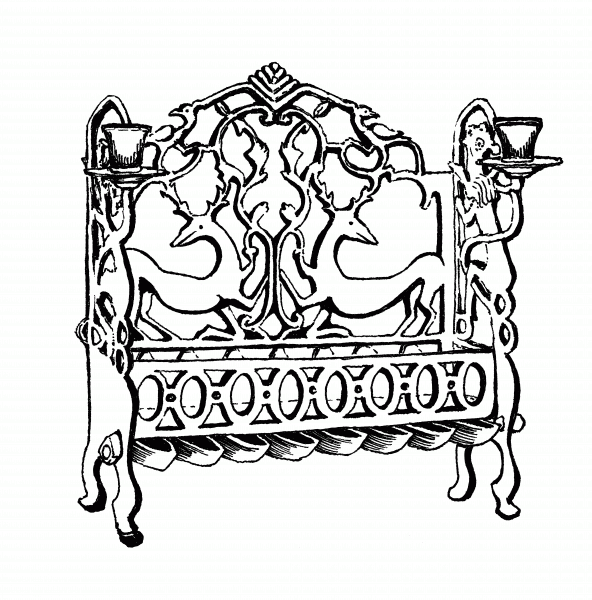
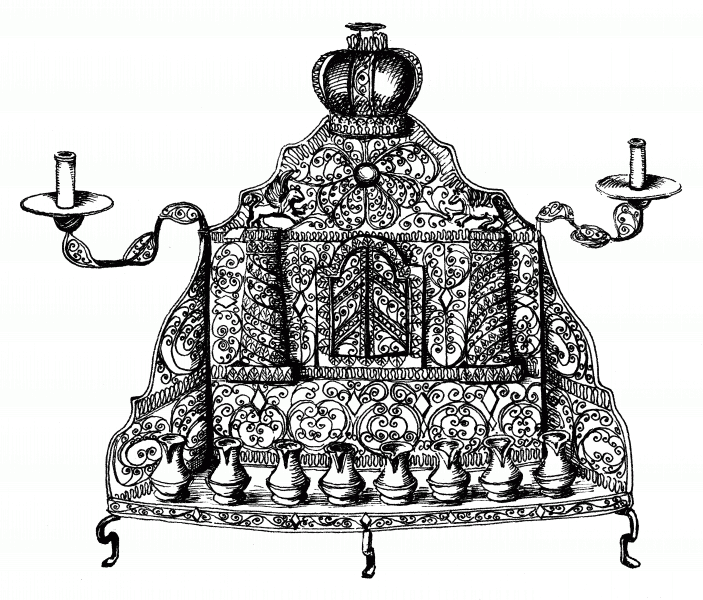
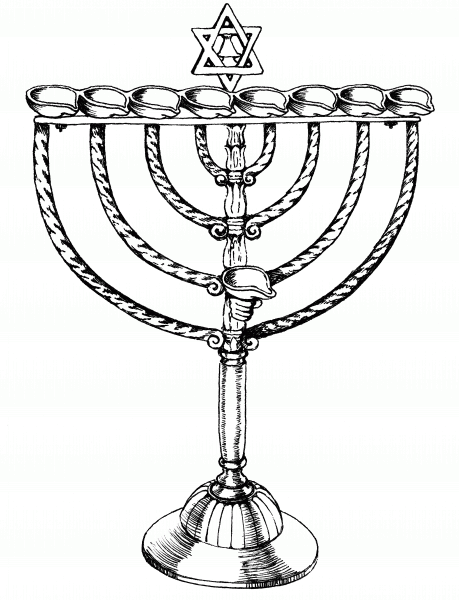
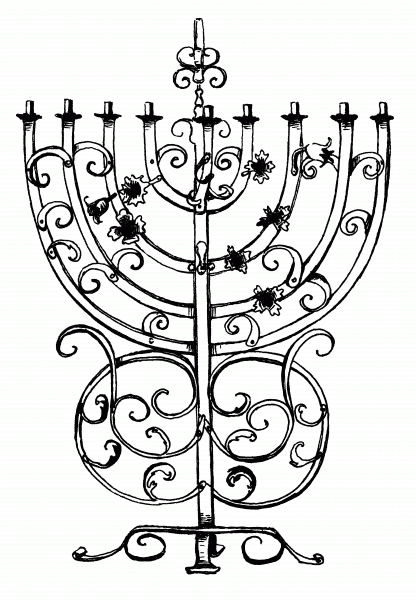
![[design/2013/Twitter.png]](https://c.jewishmuseum.cz/images/design/2013/Twitter.png)
![[design/2013/Instagram.png]](https://c.jewishmuseum.cz/images/design/2013/Instagram.png)

![[homepage-banner/incident.jpeg]](https://c.jewishmuseum.cz/images/homepage-banner/incident.jpeg)